
views
Cleaning and Smoothing Your Skin

Wash your face. When your pores are clogged with dirt, they are going to appear larger. Before applying any makeup, use a gentle cleanser to remove any dirt or oil from your skin. For best results, choose an oil-free cleanser. When you’re rinsing your face after washing, use cool or cold water. It will help keep your pores from producing excess oil so they don’t appear as large.
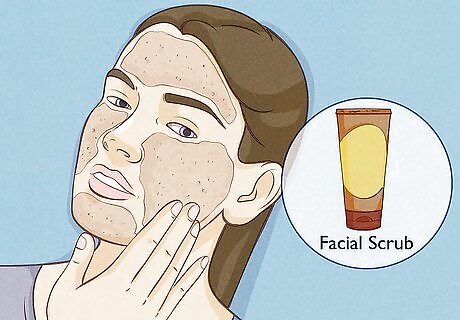
Exfoliate with a facial scrub. Dead skin cells can clog your pores and make them appear larger. After washing your face, massage a facial scrub over your skin in circular motions to gently exfoliate and smooth your skin to ready it for foundation. To keep your pores clear, exfoliate two to three times a week, no more than that. You can make your own natural exfoliating scrub by mixing three parts baking soda with one part water. Don’t use your baking soda scrub more than once a week. For better results, do a facial once a month. A good facial peeling once every three months can also help with large pores.

Apply a serum or moisturizer with salicylic acid. Salicylic acid is an important ingredient when you want to make your pores appear smaller. It helps slough off dead skin cells from inside the pore lining so pores appear smaller. Smooth a salicylic acid-based serum or moisturizer over your face to keep your pores clear and moisturize your skin at the same time. A serum is best for extremely oily skin. A lightweight moisturizer is best for combination or normal skin. Be sure to choose an oil-free, non-comedogenic serum or moisturizer to prevent clogged pores. A professional glycolic or salicylic peeling can also be extremely helpful for large pores.
Priming and Applying Foundation
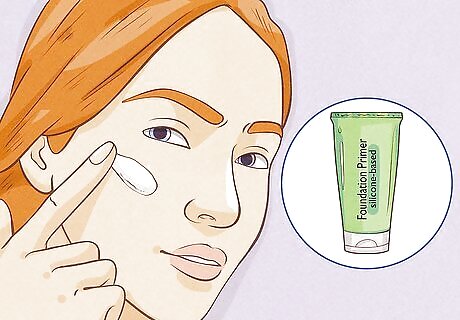
Use a silicone-based foundation primer. Even if you’ve washed, exfoliated, and moisturized your face, your pores may still look large. Applying a silicone-based foundation primer can fill in your pores, so they aren’t as noticeable and you have a smooth canvas to apply your foundation over. Apply your primer with clean fingers so you can be sure to really work it into your pores. Opt for an oil-free, mattifying primer to keep your pores looking small all day. Check the label on your primer to make sure it is designed to minimize pores.
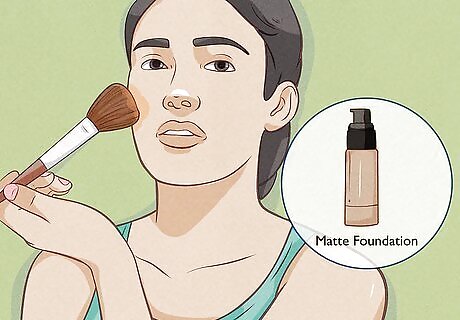
Choose a matte foundation. Any makeup that has a dewy or luminous finish calls attention to the texture of your skin, including large pores. Make your pores appear smaller by using a matte foundation that won’t reflect light and highlight your pores. Matte foundation also keeps the skin from looking shiny throughout the day, so your pores will stay minimized. Opt for a matte foundation that’s oil-free and non-comedogenic so your pores stay as clear as possible.
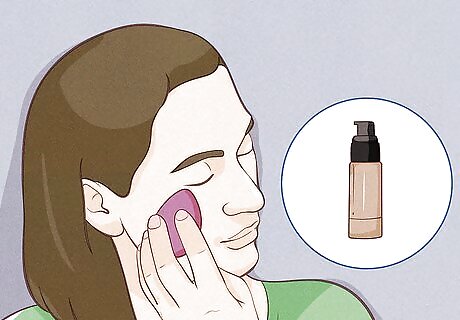
Press and buff the foundation into your skin. Brushing or smoothing foundation over enlarged pores usually causes the makeup to catch in them and emphasize their size. Instead, press and buff the foundation into your skin in circular motions. Pressing fills in the pores, while buffing helps cover them for a minimized appearance. A full, dense foundation brush is ideal for pressing and buffing your makeup in. However, you can also use an egg-shaped sponge to apply your foundation in a similar manner. Wet the sponge and wring it out before using it, though, so it doesn’t absorb too much of your makeup.
Setting the Foundation

Apply setting powder over your face. Once you’ve applied the foundation, you want to set it so your pores stay minimized all day. Use a powder puff to press and roll a translucent setting powder over your face. It will fill in any pores that your primer and foundation haven’t covered and keep your face from getting shiny. Loose powder typically works best for pressing and rolling into the skin. Pressed powder can look cakey.
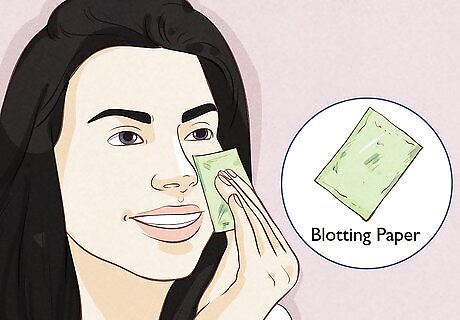
Blot your face with blotting papers. Even if you apply a setting powder, there may still be some shine or excess makeup on your face that emphasizes your pores. Minimize their appearance by pressing blotting papers over your face. They’ll soak up excess oil and emollients from the surface of your skin without disrupting your makeup. If you don’t have blotting papers, take a tissue and pull it apart so you have a single layer. Gently press it over your face to blot.
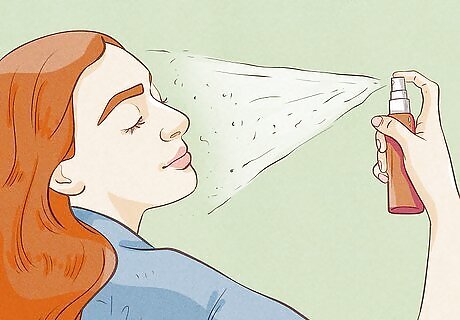
Spritz your face with a setting spray. When you’re happy with how your foundation looks, it’s a good idea to apply a setting spray. Not only will it lock your makeup in place all day, it will remove any powderiness or cakiness that might occur if you use too much foundation and powder. To use the spray, hold the bottle out at arm’s length, and spritz it several times over your entire face. Different setting sprays are made for different skin types (oily, dry, or combination). Make sure you pick a setting spray that is right for your skin.



















Comments
0 comment